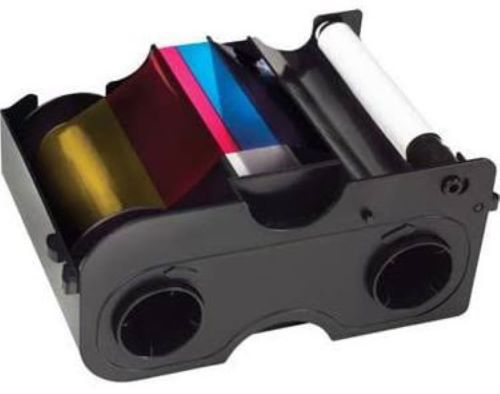Click here to get this post in PDF
Thermal printing is a commonly used printing method that’s great at producing high-quality images and text. Not only is it efficient, but it’s also quick and easy to use.
When it comes to thermal printing, there are two different types – direct thermal and thermal transfer. If you’re looking to print labels, it is important to know the differences between the two.
We’ll look at both of them in greater detail below.
Direct Thermal
In a nutshell, direct thermal printing uses heat-sensitive paper with ink embedded within the label material. When the paper comes into contact with the print head’s hot temperature, it changes colour before cooling and leaves behind the text or image accordingly.
What’s unique about direct thermal printing is the fact that it doesn’t require anything from ink to toner, ribbon and more. What this means is that there are fewer supplies required and fewer maintenance costs as well.
Direct thermal printing is also exceptionally versatile, and you can use it for mobile and desktop and industrial printers.
As direct thermal printing uses heat-sensitive materials, it can’t last for a long period – usually for about eight months maximum. They’re also rather sensitive, tend to scratch, and cannot be exposed to direct sunlight or high temperatures.
Here’s an overview of the pros and cons of direct thermal printing:
Pros
– Easy to load and operate
– Not difficult to maintain at all
– No need to use ribbon, ink or toner
– Great for indoor as well as short-term print jobs
Cons
– It doesn’t last for a long period of time
– You can only print on paper
– Fades quickly – especially when exposed to both UV light and heat
– Can only print in black ink
Thermal transfer
One of the main differences between thermal transfer and direct thermal printing is the fact that it needs a ribbon to print. What the ribbon does is that it acts as a buffer between the print head and the label material.
During the printing, it simply melts onto the label. This particular method produces a darker text that results in clear images. Not only is this method of printing more durable, but it can also last for a good period of time.
With thermal transfer printing, however, there are a couple of things to consider such as media type, printer model, application and more. This is important as certain thermal ribbon materials are suited to certain substrate materials.
Here’s an overview of the pros and cons for thermal transfer printing:
Pros
– It’s much more durable in comparison to direct thermal printing
– It can last for a good period of time
– It can handle exposure to chemicals, heat and sunlight
– You can print colour with no problems
Cons
– You need a ribbon to print
– It can be relatively pricey
– You need to ensure that the right ribbon matches with the printer model
Taking both into consideration
While both direct thermal and thermal transfer printing are great, they’re good for different things. If you’re looking for something simple and easy, direct thermal printing is a good option.
If you want something that can last for a long period of time and can handle different elements, thermal transfer printing would be the better option.
You may also like: Rush Order Printing: A Definitive Guide to Online Printing Services


